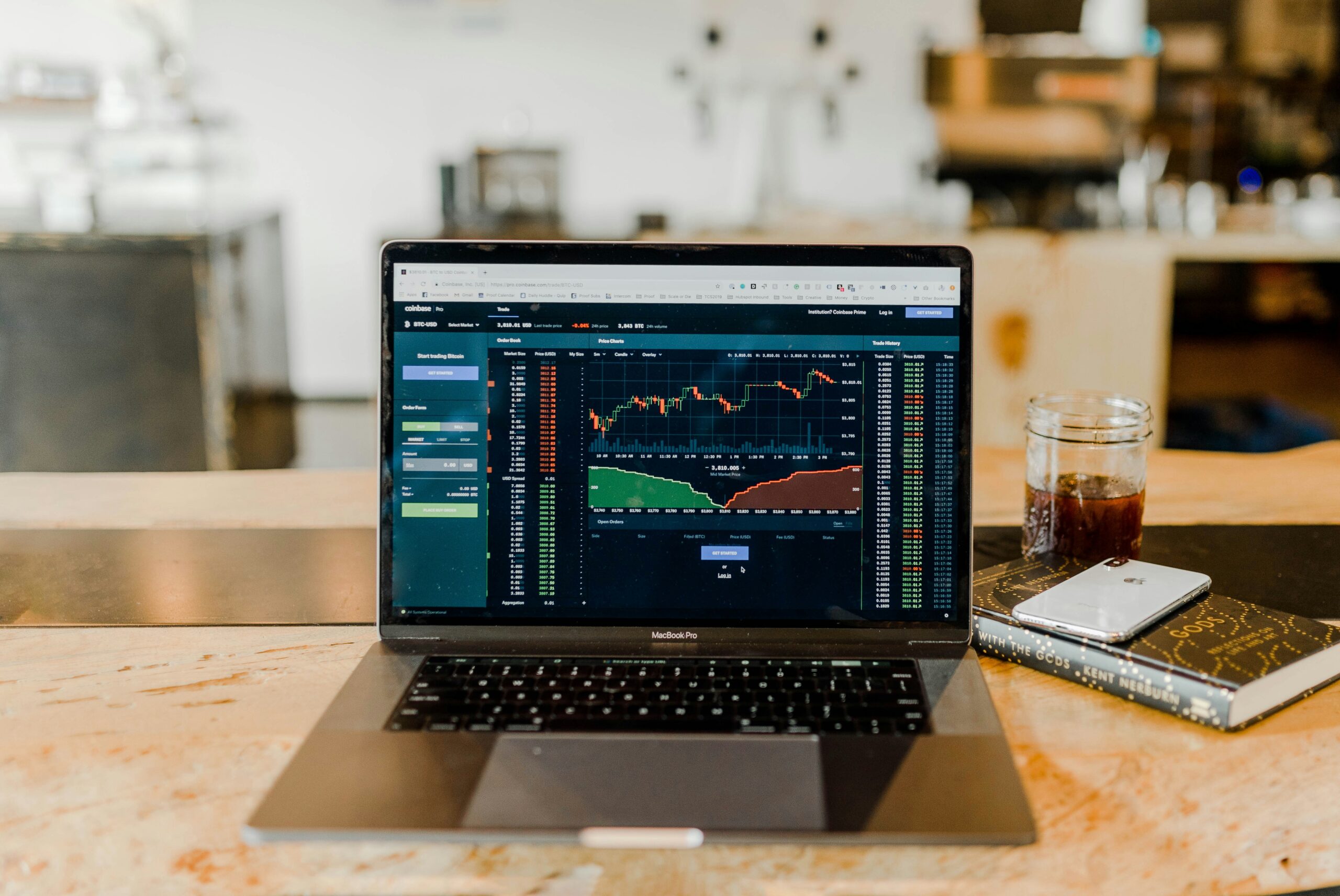Crypto Wallet Security: Best Practices to Keep Your Digital Assets Safe
June 6, 2024 | by apeonet.blog

Introduction to Crypto Wallet Security
In the rapidly evolving digital landscape, securing crypto wallets has become an imperative task for anyone involved in the world of cryptocurrencies. A crypto wallet is a digital tool that allows users to store, manage, and transact various forms of digital assets, including Bitcoin, Ethereum, and other altcoins. Unlike traditional wallets, crypto wallets do not hold physical currency; instead, they store private and public keys, which are essential for validating and securing transactions on the blockchain.
The significance of crypto wallet security cannot be overstated, as the decentralized nature of blockchain technology means that once assets are lost or stolen, they are virtually impossible to recover. This is compounded by the increasing sophistication of cyber threats, making it crucial for users to adopt robust security measures. Poor security practices such as weak passwords, failure to enable two-factor authentication, and neglecting software updates can expose users to risks such as hacking, phishing attacks, and malware.
As digital assets continue to gain mainstream acceptance, the need for stringent security protocols becomes ever more pressing. The potential financial loss and emotional distress caused by crypto theft underscore the importance of implementing comprehensive security strategies. Moreover, the transparency of blockchain transactions, while beneficial for verifying the integrity of the network, also means that any security lapses are visible and can be exploited by malicious actors.
This blog post aims to equip readers with the knowledge and best practices necessary to protect their digital assets from various threats. By understanding the fundamental principles of crypto wallet security and adhering to recommended guidelines, users can significantly mitigate the risks and ensure the safety of their investments. The following sections will delve into specific strategies and tools designed to enhance the security of crypto wallets, providing a robust framework for safeguarding digital wealth.
Understanding Different Types of Crypto Wallets
In the realm of cryptocurrency, selecting the appropriate wallet is a crucial step in safeguarding your digital assets. Various types of crypto wallets exist, each offering unique features and levels of security. Understanding these differences is essential for making informed decisions. The primary categories of crypto wallets include hot wallets, cold wallets, hardware wallets, and paper wallets.
Hot wallets are digital wallets that remain connected to the internet. They are highly convenient for frequent transactions, allowing users to quickly access and trade their assets. However, this connectivity makes them more susceptible to cyber-attacks and hacking attempts. Popular examples of hot wallets include mobile, desktop, and web wallets. While they offer ease of use, the security risks associated with hot wallets necessitate robust protective measures, such as strong passwords and two-factor authentication.
Cold wallets offer a higher level of security by remaining offline. These wallets store cryptocurrency keys on a physical device or document, reducing the risk of online theft. Cold wallets are ideal for long-term storage and hodlers who do not require frequent access to their assets. Though less convenient than hot wallets, their offline nature provides a robust defense against cyber threats.
Hardware wallets are a type of cold wallet that stores private keys on a physical device, such as a USB stick. These wallets offer an optimal balance between security and usability. Hardware wallets are immune to computer viruses and malware and are typically protected by a PIN code. This makes them a popular choice among serious investors. Despite their high security, users must ensure the physical safety of the device to prevent loss or theft.
Paper wallets are another form of cold storage, involving the physical printing of private and public keys on paper. This method is highly secure, provided the paper wallet is stored in a safe and secure location. However, the risk of physical damage or loss necessitates careful handling and storage. Paper wallets are best suited for individuals who prefer a completely offline storage solution and are confident in their ability to manage physical documents securely.
By understanding these different types of crypto wallets and their respective pros and cons, individuals can make more informed decisions about how to best secure their digital assets. Each wallet type serves different needs, and choosing the right one depends on the specific requirements and risk tolerance of the user.
Setting Up Your Crypto Wallet Securely
When it comes to securing your digital assets, the initial setup of your crypto wallet is of paramount importance. The first step in this process is selecting a reputable wallet provider. It is advisable to conduct thorough research and choose a provider that is well-established, has positive user reviews, and offers robust security features. Reputable providers often have a track record of addressing vulnerabilities and implementing updates to enhance security.
Creating a strong, unique password is equally critical. Your password should be a combination of upper and lower case letters, numbers, and special characters. Avoid using easily guessable information such as birthdays or common words. It is also recommended to use a password manager to generate and store complex passwords securely.
Enabling two-factor authentication (2FA) adds an extra layer of security to your crypto wallet. 2FA typically requires a second form of verification, such as a code sent to your mobile device, in addition to your password. This makes it significantly more difficult for unauthorized users to gain access to your wallet, even if they obtain your password.
Securely storing your recovery phrases or private keys is another crucial aspect of setting up your crypto wallet. Recovery phrases, also known as seed phrases, are a series of words generated by your wallet that can be used to recover your funds if you lose access to your wallet. These phrases should be written down and stored in a safe, offline location. Avoid storing them digitally or sharing them with anyone, as possession of these phrases grants full access to your funds.
By following these best practices during the initial setup of your crypto wallet, you can significantly enhance the security of your digital assets. Ensuring that each step is meticulously followed will provide a strong foundation for the ongoing protection of your cryptocurrency holdings.
Regularly Updating and Backing Up Your Wallet
In the realm of cryptocurrency, the security of your digital assets is paramount. Regularly updating your crypto wallet software is a critical step in safeguarding your assets. Developers continuously work on enhancing wallet security and patching vulnerabilities. By keeping your wallet software updated, you ensure that you are protected against the latest threats and security loopholes.
Equally important is the practice of regularly backing up your wallet. A backup is an essential safety net that can save you from losing access to your assets due to hardware failure, theft, or other unforeseen events. To effectively back up your wallet, follow these best practices:
First, create a backup of your wallet data. Most wallet software provides a straightforward way to export a backup file. Ensure you follow the specific instructions for your wallet type, whether it be a hardware wallet, software wallet, or a mobile wallet. Typically, this involves exporting a file or generating a recovery phrase, also known as a seed phrase.
Next, store your backups in multiple secure locations. It’s advisable to use both physical and digital storage solutions. For physical storage, consider keeping a hard copy of your recovery phrase in a safe or a safety deposit box. For digital storage, use encrypted USB drives or secure cloud storage options with strong encryption and two-factor authentication.
Restoring your wallet from a backup is a process that you should familiarize yourself with before you actually need to do it. Most wallet applications provide clear instructions on how to import a backup file or enter a recovery phrase. Ensure you follow these instructions meticulously to avoid any errors that could result in loss of access to your assets.
By adhering to these practices of regularly updating your wallet software and diligently backing up your wallet data, you significantly enhance the security of your digital assets. This proactive approach will help you guard against potential threats and ensure the continuity of access to your cryptocurrencies.
Recognizing and Avoiding Phishing Scams
Phishing scams represent a significant threat to the security of your crypto wallet, often exploiting human psychology to deceive users into providing sensitive information. These scams typically manifest through fake emails, websites, and social media accounts designed to mimic legitimate entities. Recognizing the signs of phishing is crucial in safeguarding your digital assets.
Fake emails are a common vector for phishing attacks. They often appear to come from reputable sources such as cryptocurrency exchanges or wallet providers. These emails may urge you to act quickly, claiming there is an issue with your account or that you need to verify information. Look for subtle discrepancies in the sender’s email address and be wary of generic greetings, grammatical errors, and urgent calls to action. A legitimate entity will never request your private keys or passwords via email.
Phishing websites are another prevalent threat. These sites often replicate the appearance of genuine websites, including logos, fonts, and even URLs that are nearly identical to those of legitimate services. To avoid falling victim, always double-check the website’s URL for slight misspellings or unusual characters. Bookmarking the official websites of exchanges and wallets can help ensure you are visiting the correct site. Additionally, employing browser extensions that identify and block phishing sites can provide an extra layer of security.
Social media platforms are not immune to phishing attempts. Scammers often create fake profiles that impersonate well-known figures in the cryptocurrency community or customer support representatives. These accounts may offer too-good-to-be-true giveaways or request personal information. Verify the authenticity of social media accounts by checking for verification badges and cross-referencing with official sources. Never share private information publicly or via direct messages.
Practical measures can significantly reduce the risk of falling prey to phishing scams. Enable two-factor authentication (2FA) on all your crypto accounts, use a reputable password manager to create and store strong, unique passwords, and remain vigilant about unsolicited communications. By staying informed and cautious, you can effectively protect your digital assets from phishing threats.
Using Hardware Wallets for Enhanced Security
Hardware wallets are highly regarded for their robust security features, providing an additional layer of protection for your digital assets. Unlike software wallets, which are susceptible to malware and hacking attempts, hardware wallets store your private keys on a physical device, disconnected from the internet. This offline storage significantly reduces the risk of unauthorized access.
A hardware wallet works by generating and storing private keys within the device itself. When you wish to make a transaction, the wallet signs it internally, ensuring that your private keys are never exposed to your computer or the internet. This process is facilitated by a secure microcontroller, which isolates the keys from external threats. Even if your computer is infected with malware, your private keys remain safe within the hardware wallet.
The enhanced security of hardware wallets stems from their design and functionality. These devices often incorporate features such as PIN protection, two-factor authentication, and recovery phrases. The PIN acts as a first line of defense, preventing unauthorized users from accessing the wallet. Two-factor authentication adds an extra layer of security by requiring an additional verification step. Recovery phrases, typically a series of 12 to 24 words, allow you to restore your wallet and funds if the device is lost or damaged, ensuring you retain access to your digital assets.
To maximize security, it is crucial to purchase hardware wallets from reputable sources. Counterfeit devices pose a significant risk, as they may be preloaded with malicious software designed to steal your funds. Always buy directly from the manufacturer’s website or authorized resellers to ensure you receive a genuine product. Additionally, regularly update the wallet’s firmware to benefit from the latest security enhancements and features.
Proper usage and maintenance of your hardware wallet are essential to maintaining its security. Keep your device’s PIN and recovery phrase confidential, and store them in a secure location. Avoid sharing these details with anyone, and never input your recovery phrase online. By following these best practices, you can safeguard your digital assets and enjoy the peace of mind that comes with using a hardware wallet.
The Role of Multi-Signature Wallets
Multi-signature wallets, often referred to as multi-sig wallets, play a crucial role in enhancing the security of digital assets. Unlike traditional single-signature wallets, which require only one private key to authorize transactions, multi-sig wallets necessitate multiple approvals before any transaction can be executed. This additional layer of security significantly reduces the risk of unauthorized access and theft.
A multi-sig wallet operates on a principle similar to that of a joint bank account. Typically, these wallets require a predefined number of signatures out of a possible set to authorize a transaction. For instance, a 2-of-3 multi-sig wallet would necessitate two out of three possible private keys to approve a transaction. This structure ensures that even if one key is compromised, the assets remain secure as long as the other keys are safe.
The benefits of using multi-signature wallets are manifold. Primarily, they provide enhanced security by distributing the approval process across multiple parties, making it considerably harder for malicious actors to gain unauthorized access. Additionally, multi-sig wallets offer increased control and accountability, as every transaction requires consensus among the designated signatories. This feature is particularly beneficial for organizations and partnerships, ensuring that no single individual can unilaterally make critical financial decisions.
Setting up a multi-signature wallet involves a few steps. Firstly, users must select a wallet provider that supports multi-sig functionality. After creating an account, users can generate multiple private keys, which should be securely stored in different locations. It is essential to distribute these keys among trusted parties to maximize security. Once the keys are in place, the user can configure the wallet to specify the number of required signatures for transaction approval.
Using a multi-signature wallet effectively requires regular monitoring and maintenance. Users should periodically review the list of signatories and update the keys if necessary. Additionally, it is advisable to conduct regular security audits to ensure that the wallet and its associated keys remain uncompromised.
Developing a Security Mindset
In the rapidly evolving landscape of cryptocurrency, developing a security mindset is paramount to safeguarding your digital assets. A proactive approach to crypto wallet security involves adopting habits and practices that ensure ongoing vigilance. One of the fundamental steps is regularly monitoring wallet activity. By consistently checking transaction histories and account balances, you can quickly identify any unauthorized activities and take immediate action to mitigate potential losses.
Staying informed about the latest security threats is another crucial aspect. The crypto ecosystem is continuously targeted by new and sophisticated cyber-attacks. Subscribe to newsletters, follow reputable sources, and participate in community forums to keep abreast of emerging threats and security best practices. Awareness of phishing schemes, malware, and other cyber threats is vital to maintaining the integrity of your crypto wallet.
Caution is also necessary when using public Wi-Fi and shared devices. Public networks are notoriously insecure, providing opportunities for malicious actors to intercept data. Whenever possible, use a Virtual Private Network (VPN) to encrypt your internet connection. Additionally, avoid accessing your crypto wallet from shared or public devices, as these can be compromised or infected with malware designed to capture sensitive information.
Furthermore, consider implementing multi-factor authentication (MFA) for an added layer of security. MFA requires multiple verification methods before granting access to your wallet, making it significantly more challenging for unauthorized users to breach your account. Pair this with a strong, unique password and regular updates to your security software to bolster your defenses.
By cultivating these habits and maintaining a proactive security mindset, you empower yourself to protect your digital assets effectively. Continuous vigilance and informed decision-making are the cornerstones of robust crypto wallet security, ensuring that your investments remain safe in an increasingly complex digital world.
RELATED POSTS
View all




